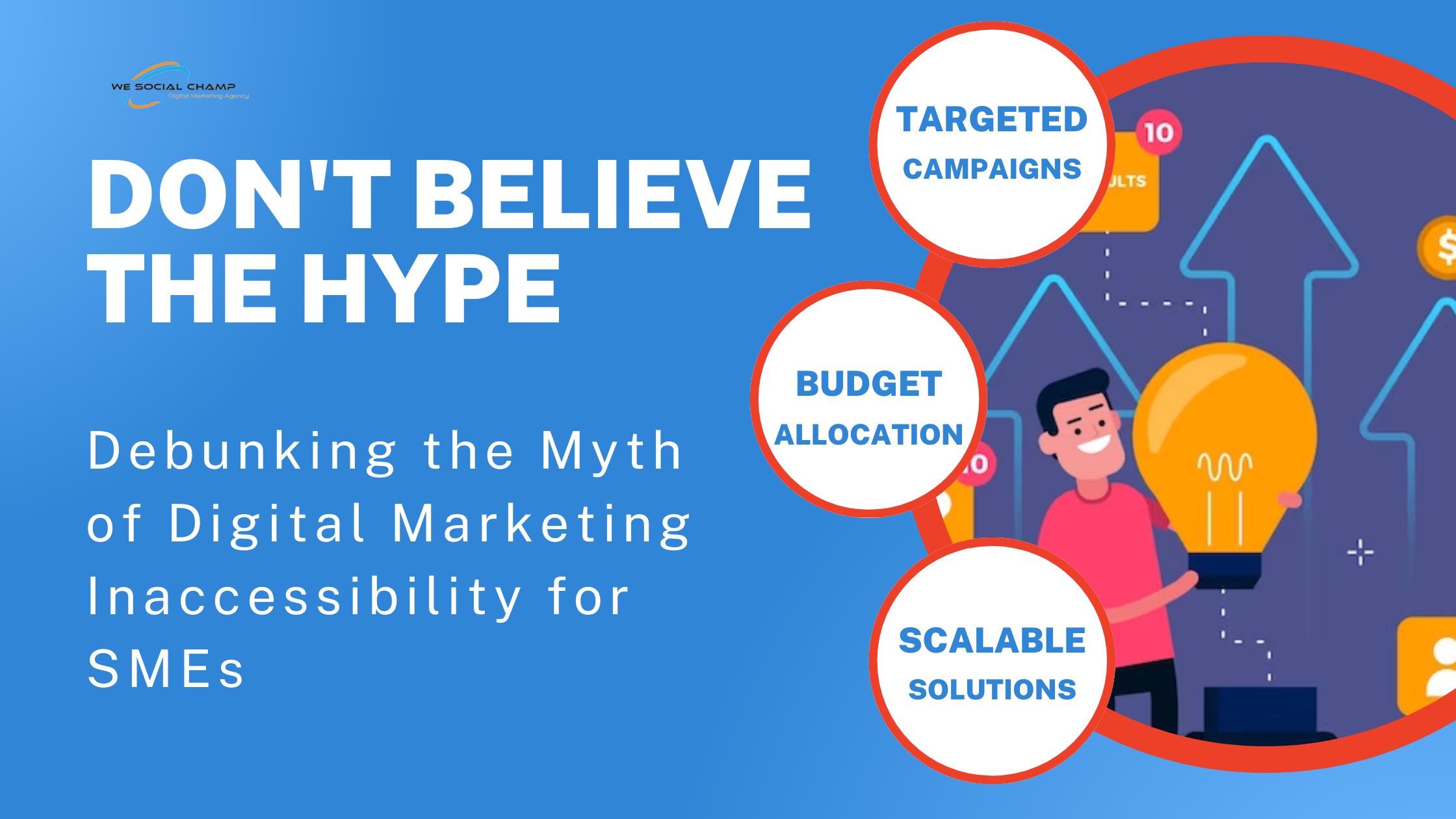Consumer brands stand as pillars of enduring competitive advantage in today’s fiercely competitive market. Yet, navigating the complexities of brand management and realizing their utmost potential presents unprecedented challenges. The landscape is shaped by an increasingly diverse consumer base, wary of traditional marketing tactics, and empowered by digital platforms that effortlessly unite like-minded individuals. To thrive in this dynamic environment, brand managers must master the art of Creating Brand Value through storytelling. By crafting narratives that ignite dialogue, they seize attention, foster engagement, and imbue their brands with meaningful significance. This shift towards narrative-driven branding not only captivates audiences but also cultivates lasting connections, essential for sustained success in the ever-evolving consumer landscape.
As a Brand, you should always aim to dive deep into a transformative program designed to equip today’s business-to-consumer or B2C brand management with the essential skill set. Explore the intricacies of branding as a collective and collaborative process, engaging not only firms and consumers but also other cultural producers. By delving into this immersive experience, you’ll gain invaluable insights and abilities to craft, communicate, and manage brands in ways that foster meaningful relationships and drive mutual value creation.
What are the key components to create a strong brand value?
Creating brand value through a robust strategy requires a careful blend of strategy and creativity. Let’s delve into the key components that contribute to the creation of a strong brand identity:
Understanding Consumer Perceptions:
To establish brands that resonate with today’s consumers, it’s essential to view them through their eyes. Conduct thorough market research to uncover the sources of value that consumers associate with your brand. This could include factors such as quality, reliability, innovation, and emotional appeal.
Compelling Brand Storytelling:
Effective brand storytelling is a powerful tool for connecting with your audience on a deeper level. Craft narratives that evoke emotions, share your brand’s values and heritage and engage consumers in a meaningful way. By weaving a compelling story, you can create a lasting impression and foster stronger connections with your target audience.
Harnessing the Influence of Brand Ambassadors:
Brand influencers play a significant role in shaping consumer perceptions and driving brand affinity. Identify individuals or organizations that align with your brand values and have a strong presence in your target market. Collaborate with these influencers to amplify your brand message and reach a wider audience, leveraging their credibility and authority to build trust and credibility.
Fostering Brand Communities:
Brands that cultivate communities around their products or services can tap into a powerful source of value. Create spaces, both online and offline, where consumers can connect, share experiences, and engage with your brand and fellow enthusiasts. By facilitating meaningful interactions and fostering a sense of belonging, you can strengthen brand loyalty and advocacy among your audience.
Nurturing Brand Loyalty:
Building brand loyalty is essential for long-term success and sustainability. Focus on delivering exceptional customer experiences at every touch point, from pre-purchase interactions to post-purchase support. Implement loyalty programs, incentives, and rewards to incentivize repeat purchases and foster a sense of appreciation and value among your customers.
Transforming Consumers into Allies:
In today’s consumer-centric landscape, brands must view consumers as allies rather than adversaries. Prioritize transparency, authenticity, and open communication in your interactions with customers. Solicit feedback, listen to their concerns, and demonstrate a genuine commitment to addressing their needs and preferences. By fostering a collaborative relationship built on mutual trust and respect, you can turn consumers into advocates and champions for your brand.
Crafting brand strategy and managing brands for maximum value-
Evolving and Repositioning Existing Brands:
To compete more successfully, businesses must continuously evolve and reposition their existing brands. This involves staying attuned to market trends, consumer preferences, and competitive dynamics. By adapting branding strategies to reflect changing market conditions and consumer needs, businesses can maintain relevance, capture new market segments, and stay ahead of the curve.
Effectively Responding to Competing Brands Entering the Market:
With new brands constantly entering the market, it’s essential to respond effectively to maintain a competitive edge. This requires a thorough understanding of competitor strategies, strengths, and weaknesses. By conducting competitive analysis and market research, businesses can identify opportunities to differentiate their brand, enhance value propositions, and capture market share from competing brands.
Expanding Your Brand’s Profitability:
Brand expansion is key to unlocking new revenue streams and maximizing profitability. This may involve extending product lines, entering new markets, or targeting new customer segments. By leveraging the strength and equity of existing brands, businesses can capitalize on opportunities for growth and diversification while minimizing the risks associated with launching entirely new brands.
Developing an Effective Brand Portfolio Strategy:
Managing multiple brands within a portfolio requires careful planning and coordination. A robust brand portfolio strategy ensures that each brand complements the others while maintaining its unique identity and value proposition. By aligning brand portfolios with overall business objectives, businesses can optimize resource allocation, streamline operations, and maximize the collective impact of their brands in the market.
Managing Brand Risk:
Brand risk management is essential for safeguarding brand reputation and equity. This involves identifying potential risks, such as negative publicity, brand dilution, or counterfeiting, and implementing proactive measures to mitigate them. By monitoring brand performance, consumer sentiment, and market trends, businesses can identify potential threats early on and take preemptive action to protect their brand’s integrity and value.
Unleashing the Potential of Branding: Elevating Your Brand to a Key Corporate Asset
Assessing Brand Value:
The first step in harnessing the power of branding is to understand and quantify the value it brings to your business. This involves evaluating various aspects such as brand recognition, customer loyalty, and market positioning. By conducting a comprehensive assessment, you can gain insights into the strengths and weaknesses of your brand, laying the foundation for strategic decision-making and future growth.
Investing in Brand Development and Track the ROI:
Investing in branding initiatives is essential for nurturing and strengthening your brand over time. Whether it’s through strategic marketing campaigns, product innovations, or customer experience enhancements, every investment contributes to building brand equity. However, it’s crucial to evaluate the return on investment (ROI) of these branding efforts to ensure that resources are allocated effectively and deliver tangible results.
Cultivating Competitive Advantage:
A well-defined brand not only sets you apart from competitors but also catalyzes sustainable competitive advantage. By aligning your brand with your unique value proposition and core competencies, you can carve out a distinct position in the market that is difficult for competitors to replicate. This differentiation not only attracts customers but also fosters brand loyalty and resilience in the face of industry challenges.
Strategic Networking: Building Your Brand and Expand Your Network for Professional Success
-
Broaden your network by immersing yourself in diverse environments:
In the globalized landscape of today’s professional world, expanding your network is crucial. Immerse yourself in diverse environments by seeking opportunities to collaborate and work with executives from various cultural backgrounds and countries. Whether through international projects, cross-cultural teams, or networking events, engaging with professionals from different parts of the world provides you with a broadened perspective, cultural intelligence, and a network that transcends geographical boundaries.
-
Foster relationships with a diverse circle of peers:
Building relationships with a diverse group of peers is not just about expanding your social circle; it’s a strategic move for professional development. Cultivate connections with individuals who bring different experiences, skills, and perspectives to the table. This diverse peer group can serve as a valuable resource, offering insights and solutions to your business challenges that you might not have considered. These relationships also provide a support system and sounding board for your career decisions.
-
Forge a robust personal brand:
Developing a strong personal brand is an ongoing process that involves defining, refining, and consistently showcasing your unique identity. Start by identifying your values, strengths, and areas of expertise. Craft a compelling narrative that reflects your professional journey and aspirations. Consistency is key – ensure that your online and offline presence aligns with your brand. Leverage platforms like LinkedIn to share your insights, accomplishments, and perspectives, establishing yourself as an authority in your field. A well-defined personal brand not only sets you apart but also attracts opportunities aligned with your professional goals.
Who should think about creating brand value?
- Mid to senior-level marketing executives charged with creating, nurturing, and managing brand value
- Entrepreneurs who want to create or grow their brands in the consumer/retail space
- Consumer and retail sector general managers engaged in growth strategy
- CEOs, CMOs, and other senior leaders who recognize the asset value of their brands and want to invest in them
Summary:
In today’s consumer-centric market, creating brand value or establishing a strong personal brand and expanding your network is critical for success in the B2C realm. By showcasing your unique value proposition, connecting with a diverse range of consumers, and exploring new avenues for engagement, you can drive loyalty, trust, and growth for your brand.
From enhancing your online presence to leveraging social media platforms, there are countless strategies to elevate your brand and expand your reach in the B2C landscape. Take the first step towards unlocking your brand’s full potential and connecting with your audience on a deeper level.
Ready to make waves in the B2C market? Start by building your brand and expanding your network. Whether it’s crafting compelling content, engaging with customers on social media, or participating in industry events, every action you take strengthens your brand and broadens your reach. Don’t wait – seize the opportunity to establish a meaningful connection with your audience and drive success for your B2C business. Begin your journey towards brand excellence and consumer engagement today!












